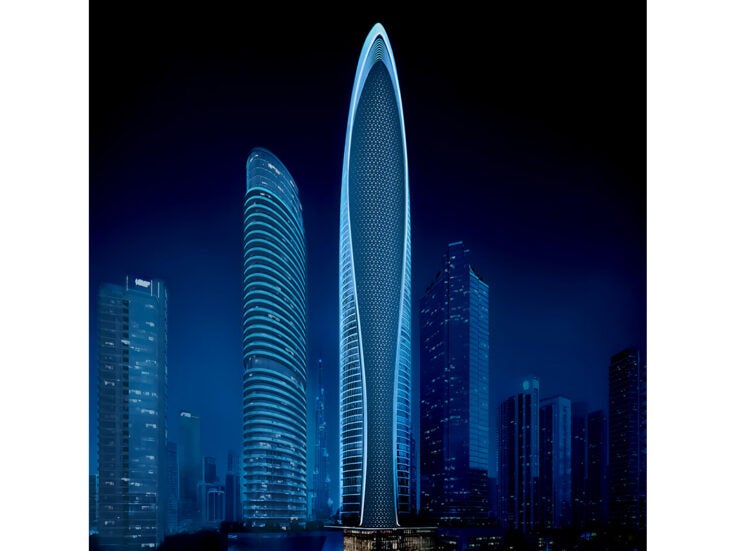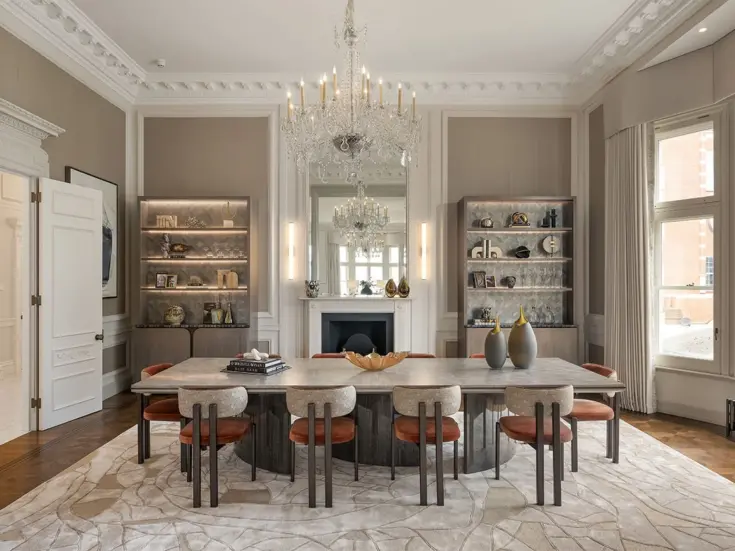
Before One Hyde Park, there was Hans Town, says Clive Aslet: an eighteenth-century visionary turned Chelsea’s green and pleasant land into London’s newest chic quarter
HAVE YOU SEEN Candy & Candy’s One Hyde Park, those shining Futurama-like towers at the top of London’s Sloane Street? Since this is Spear’s, you probably live there. Its apartments have set new records for property prices. This is where billionaires go to be with their own kind, a citadel of super-wealth with the drawbridge pulled up.
London, until now an open city, where the rich lived on streets along which the poor were at liberty to stroll, has never seen its like before. Even Charles II, restored to the throne after a bitter civil war, noisily played mall in St James’s Park surrounded by his dogs, mistresses and a throng of the general unwashed populace. The residents of One Hyde Park keep blushingly to themselves.
Well, well, it’s a new thing, but cities are dynamic organisms for which change is a sign of life. Walk down Sloane Street and you may notice, in a corner of the gardens of Cadogan Place, a white-painted bollard marked Hans Town. Nobody now remembers Hans Town, but this was what the architect Henry Holland christened the area around Sloane Street when he developed it in the late 18th century.
Before that, a mere 250 years ago, the ground had been nursery gardens. The place was still countrified when Jane Austen stayed here with her brother Henry in the 1810s; she wrote about walking ‘into’ London. Which may seem strange to us, because Holland’s terraces — neat Georgian affairs of yellow stock brick — were nothing if not urban. The architect had seen the future.
But he also kept an eye on the past. Hans Town and Sloane Street commemorate a character who died in 1753, almost a generation before work on them began in the 1770s. Sir Hans Sloane had been born in the Restoration year of 1660. Having trained as a doctor, he got a break at the age of 27, when the Duke of Albemarle made him his personal physician. Albemarle had been appointed governor of Jamaica. Off Sloane went with him — and made his fortune.
Back in London four years later, he married an heiress, rose to be Queen Anne’s Physician Extraordinary and assembled the gloriously vast collection of curiosities that became the foundation of the British Museum. Canny as ever, he also bought the manor of Chelsea, which, on his daughter’s marriage, passed into the Cadogan family, which still owns it.
You can still see some of Holland’s houses round about. They don’t look very exceptional, and weren’t intended to be — they were meant for the well-to-do, not the Whig aristocrats for whom the same architect built Brooks’s club. There was, however, one remarkable dwelling. It came to be known as The Pavilion, perhaps in recognition of the Brighton Pavilion designed by Holland for the Prince of Wales. In grounds of 20 acres, it stood just to the south of Hans Place — a mini Place Vendôme, being a rectangle with the corners cut off. Who lived in the Pavilion? None other than Holland himself.
I had always thought of Holland, an architect who managed to imbibe the elegance of French neoclassicism without much visiting Paris, as a stiff and unassuming man, in comparison with buccaneering contemporaries such as the socially ambitious Robert Adam and the woefully cavalier James Wyatt. But no: a print shows him relaxing at The Pavilion, in the attire of a country gentleman, enjoying all the refinements of rus in urbe. Not bad for the son of a Fulham builder, who began Hans Town in his early thirties. Would he have felt at home in One Hyde Park?
FAST-FORWARD A CENTURY. By now the soggy fields to the east of Hans Town have been drained, and Belgravia has arisen. Fashion resides there, and since the Fifth Earl Cadogan — politician, viceroy of Ireland — cannot duck out and build the town mansion that he commissions in the 1870s on Grosvenor Estate land, he sites it on the extreme north-eastern tip of his own property, in Cadogan Place. As the old 99-year leases fall in, Holland’s streets are largely rebuilt. If cream and black are the prevailing colours of stucco-fronted Belgravia, red is that of the Flemish-style mansions that spread, in a livery of terracotta and carved brick, across the Cadogan Estate.
By the Fifties these buildings, black with soot, had come to seem dingy to a generation exhausted by the Second World War. The Earl Cadogan of the day wanted something new. If he’d had his way, Sloane Street would have been redeveloped with shops and apartment towers that make Candy & Candy’s look like shrimps. The Chelsea Society took up arms, deploying what now seems to be the interesting argument that the area had a reputation for fostering brainy and creative types — and that the nation would be very much the worse off if they moved out. The planners gave this effort at comprehensive redevelopment the thumbs down.
But change did come to Sloane Street. New buildings, such as the Danish Embassy, arose. The dry cleaners and corner shops moved out, international brands moved in. One Hyde Park sets the seal on the area’s reinvention as a resort of fashion and the very rich. But there’s a consolation for those Londoners who don’t care for it: nothing in this city stays the same for very long.








